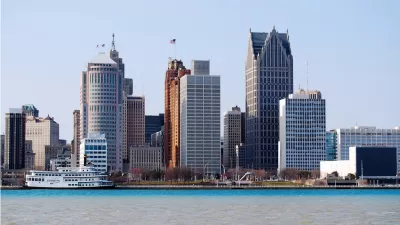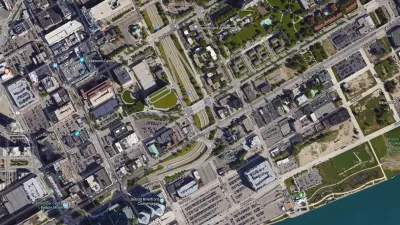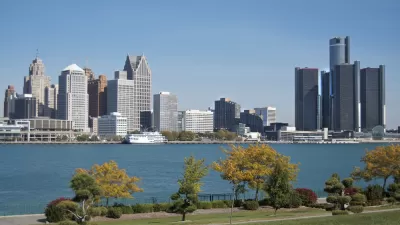Some experts think the language used to describe a redevelopment project in Detroit might be overly ambitious.

A proposal to redevelop the former Brewster-Douglass public housing site in Detroit raises a big question in a recent article by John Gallagher: "Is it really possible today to undo the damage that urban renewal policies of 50 years ago did to Detroit’s African-American community?"
According to Gallagher, the request for proposals released by the city for the Budweiser-Douglass project "boldly stated that a goal of the project was to 'repair the tear in the urban fabric' that the demolition of the historic Black Bottom and Paradise Valley neighborhoods created in the 1950s."
Gallagher speaks to a sample of academic researchers in the area of urban renewal, who all express skepticism that the project could achieve such lofty goals. "For one thing," explains Gallagher, "the new developments in the Brewster-Douglass site would house only about 1,500 new residents, compared with the 150,000 or so former black residents who once lived on Detroit's near lower east side but were forced to move due to the building of I-75 and other projects."
Gallagher also describes the project, which has since been awarded to Dan Gilbert's Bedrock Real Estate Services (along with two sites in Eastern market), as an example of upscale development investments coming to the downtown Detroit area. Gallagher surveyed the downtown development scene in a separate article from April.
FULL STORY: Can Paradise be regained in Detroit today?

Trump Administration Could Effectively End Housing Voucher Program
Federal officials are eyeing major cuts to the Section 8 program that helps millions of low-income households pay rent.

Planetizen Federal Action Tracker
A weekly monitor of how Trump’s orders and actions are impacting planners and planning in America.

Ken Jennings Launches Transit Web Series
The Jeopardy champ wants you to ride public transit.

California Invests Additional $5M in Electric School Buses
The state wants to electrify all of its school bus fleets by 2035.

Austin Launches $2M Homelessness Prevention Fund
A new grant program from the city’s Homeless Strategy Office will fund rental assistance and supportive services.

Alabama School Forestry Initiative Brings Trees to Schoolyards
Trees can improve physical and mental health for students and commnity members.
Urban Design for Planners 1: Software Tools
This six-course series explores essential urban design concepts using open source software and equips planners with the tools they need to participate fully in the urban design process.
Planning for Universal Design
Learn the tools for implementing Universal Design in planning regulations.
Ada County Highway District
Clanton & Associates, Inc.
Jessamine County Fiscal Court
Institute for Housing and Urban Development Studies (IHS)
City of Grandview
Harvard GSD Executive Education
Toledo-Lucas County Plan Commissions
Salt Lake City
NYU Wagner Graduate School of Public Service





























